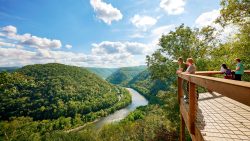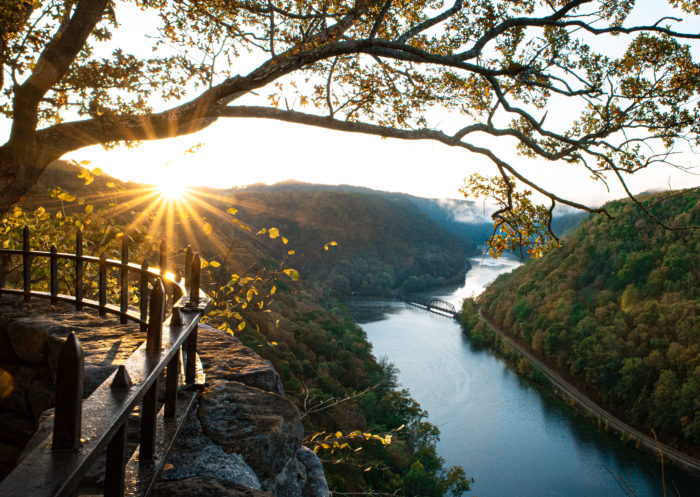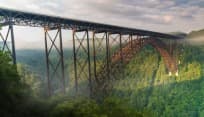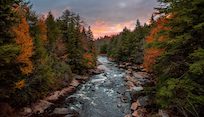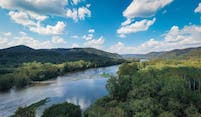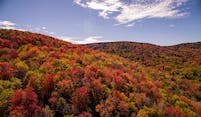4 most rewarding rock climbs for beginners
We’re the Mountain State, and mountains have a lot of rocks and cliffs that are perfect for climbing (even if you’re a beginner.)
West Virginia’s 2 most popular climbing areas are the New River Gorge National Park in the south, and Seneca Rocks in the east. They have very different characteristics– Seneca features craggy, airy peaks, and the gorge has more uniform, smooth cliffs along a deep river canyon— but both are amazing!
If you want to get into climbing, the best thing to do is hire a guide who can “show you the ropes.” Both the gorge and Seneca have excellent guides who can safely point you in the direction of good beginner routes to the top of the cliff, but here’s a list of the our 4 favorite beginner climbs:
1. Via Ferrata, Nelson Rocks Preserve
OK, this is not technically a true “rock climb,” since you’re not actually gripping the cliff to make upward progress. Instead, a via ferrata (Italian for “iron way”) is a series of ladders and cables that take you up hundreds of feet of cliffs.
Even if it’s more of a hike-meets-climb, via ferratas are a great intro for complete amateurs to get into climbing techniques. You’ll use slings and carabiners, just like you would in rock climbing. It will also get you used to dealing with being very high off the ground.
Nelson Rocks has one of only a few via ferratas in the world, not too far from Seneca Rocks. They’ve got real rock climbing, too, if you want to take your experience further.
2. Climb out of the water on Summersville Lake
Summersville Lake is one of the most unique and accessible introductions to West Virginia climbing. It’s got clear turquoise water, lush forest canopies and marble-white rock cliffs rising up to 100 feet right out of the water.
For beginning climbers, many of these cliffs are heavily “featured,” with huge, easy hand and footholds. And if you contact the local outfitters, they’ll set you up with a shaded pontoon boat that anchors along the cliffs so you to climb right from the boat and up the cliff.
In late fall, winter or early spring, the water levels will be down, so you can’t climb right out of the lake. (But you can still climb!) Local climbers have long known that the Whippoorwill crag, just downstream of the Highway 19 bridge, is one of the best places in the area for both beginners and cold-weather climbing. Big holds, an easy approach, and all-day sun make this place a gem.
And another bonus: it’s right next to the New River Gorge, so there’s plenty more climbing nearby.
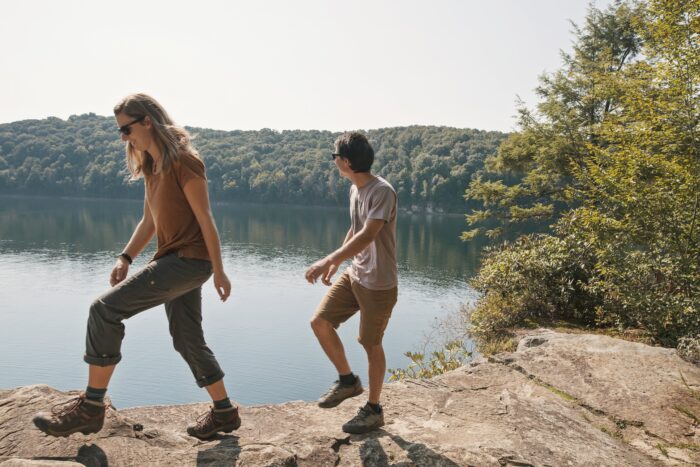
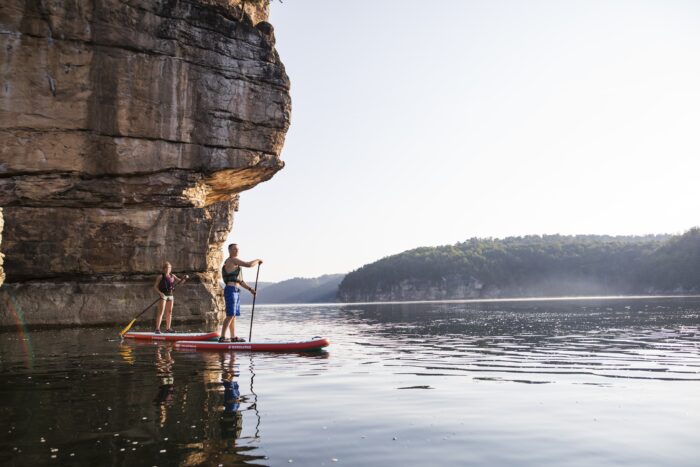
3. The Pinnacle, New River Gorge
If you have gotten used to moving around rock on shorter climbs, and established that you don’t have much of a fear of heights, you might want to consider moving on to “multi-pitch” climbing.
Multipitch is not for beginners, but you can manage it with the help of a guide. You’ll be following routes that are either too high, or wander too much to do with one length of rope. So, your guide will break the route into several “pitches”– rope lengths that are separated by “belays,” mid-cliff ledges where he will anchor into the rock, bring you up, and then continue on climbing higher!
Some of the longest climbs in the world are more than 30 pitches long (and more than 3,000 feet high). The Pinnacle, a stand-alone natural tower just downstream of the New River Gorge Bridge, is a bit shorter– about 100 feet high. But, it’s divided into 3 pitches, with several nice rest ledges to stop and take in the views, an amazing summit and a breathtaking rappel down its sheer backside.
The difficulty of the actual climbing at Pinnacle is 5.4 on a climbing scale that goes from 5.0 (very easy) to 5.16 (most difficult).
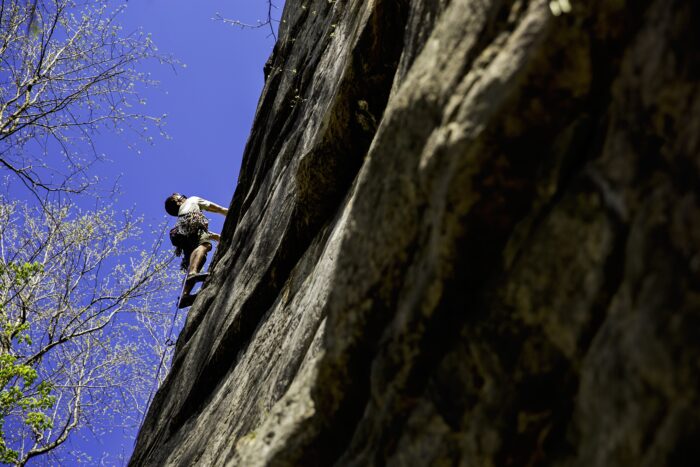
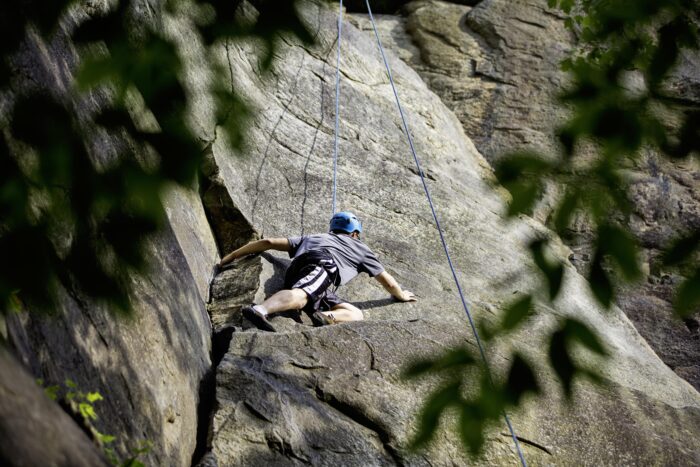
4. Gunsight to South Peak, Seneca Rocks
This is a true adventure. Even though the climbing is 5.3, a bit easier than The Pinnacle, the overall commitment and exposure make this a more serious undertaking.
Getting to the base of the route requires a steep, exposed hike and brief section of roped climbing up to the “gunsight” notch. If you have any doubts in your route-finding or confidence levels, make sure you bring a guide! From here, a pitch of climbing will take you to the top of an extremely narrow knife-blade ridge. Another short pitch travels along this ridge to the top of a very thin tower.
As you look around at the surrounding valleys and forests hundreds of feet below you, remember, you’ve still got a 150-foot rappel to get back down! This route will definitely earn you your after-climb pizza at The Front Porch.
Have you climbed all of these routes? Well then, you’re well on your way to being an experienced 5.13 climber! Keep climbing— there is more than a lifetime of amazing rock in the Mountain State!
This post was last updated on July 20, 2023

